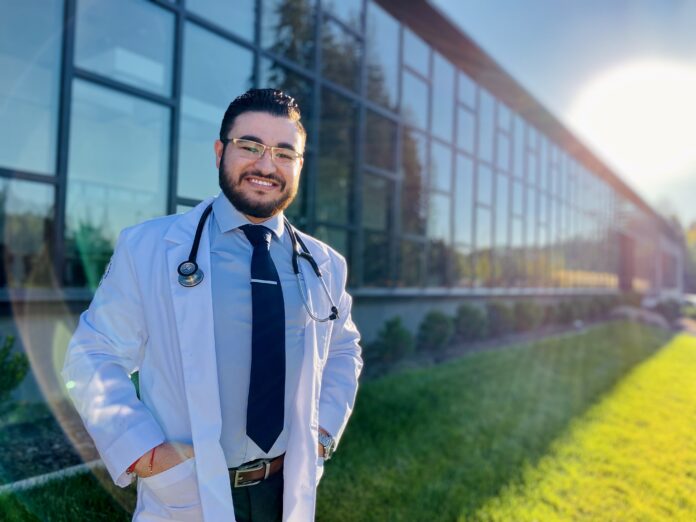
24-year-old med student sets sights on serving rural areas
By Eric Valentine
If it takes a village to raise a child into a well-adjusted and productive adult, folks in Carey only need to look at Adolfo Andazola’s current status in life to know the rural community really stepped up. This month, the Mexican-born Carey School alum took the first step toward becoming a medical doctor—he got accepted into the University of Washington School of Medicine.
Add up all the challenges the 2015 Carey School graduate faced in his 24 years of life and the result should not be “doctor to be.” Andazola was born in Mexico to a mother and father who were both ag industry workers. By the time he turned 10, his parents began his immigration process into the U.S., but specifically to Carey, where his father was working for a local cattle ranch. And in 2008, at the age of 11 and with no English language skills nor friends in the States, he started sixth grade at Carey School.
“It was rough, to be perfectly honest,” Andazola said. “But the school was so supportive. I had an ESL (English as a Second Language) teacher and at first we focused on learning English. Then it moved toward learning other subjects but in an ESL environment. And, finally, after a while, I started attending regular classes in all subjects in English.”
Andazola left out the best part. He ultimately earned the admiration of his teachers and peers for his relentless work ethic and would go on to become class salutatorian and student body president by the time he graduated high school. After high school, he attended Idaho State University, where he double majored in medical laboratory science and Spanish for the health professions. He was named ISU’s Undergraduate Student of the Year in 2018.
The perseverance he learned as a young student was on full display after he graduated with his bachelor’s degree. Andazola applied to 22 different medical schools before getting accepted into the University of Washington program. He now attends the medical school at its University of Idaho location in Moscow.
It’s a serendipitous match for both Andazola and regional healthcare, thanks to the shortage of Spanish-speaking rural healthcare providers in Idaho, Montana, Wyoming, Washington and Alaska. Specifically, Andazola is taking part in a program called TRUST (Targeted Rural Underserved Track), which will have him practicing mainly family medicine in underserved populations, including the Latinx community.
Incidentally, St. Luke’s Health System established a $500,000 scholarship endowment this week that supports Idaho medical school students interested in pursuing careers caring for rural and underserved populations.
“All I can say to other students pursuing their dream in the medical field is to accept your failures, take them with humility and learn from them. But most importantly, never quit on your goals, regardless of how long it takes. The only way to lose a fight is to quit,” Andazola observed.
Andazola now has the challenge of the rigors of medical school which for every hour inside the classroom requires an equal and opposite hour of study outside the classroom.
“If the lecture is four hours, you need to do self-learning for about four hours beforehand. Otherwise the material won’t make much sense,” Andazola explained.
After two years of foundational study, Andazola will then spend another two years in rotations—assigned shifts at an approved healthcare site in a particular field of medicine. After that, assuming he garners his medical doctorate, he can seek a residency, which is a fancy way of saying he will be a doctor-in-training for typically another four years.
“Immigrating to a rural community really lets you see firsthand the barriers to health care.
Getting the rural communities access to not just health care but preventive care has always been my ultimate goal,” Andazola said. “I feel fortunate I can be in a position one day to help.”


